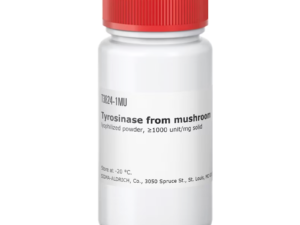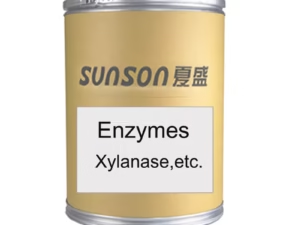Description
Glutamate Oxidase: A Key Enzyme with Diverse Applications
Glutamate oxidase (GlOx), an enzyme belonging to the oxidoreductase family, has garnered significant attention due to its unique catalytic activity and potential applications across various fields, ranging from biosensing to therapeutic interventions. In essence, GlOx catalyzes the oxidative deamination of L-glutamate, yielding α-ketoglutarate, ammonia, and hydrogen peroxide. This seemingly simple reaction has profound implications, making GlOx a valuable tool in diverse scientific and industrial settings.
The Biochemistry of Glutamate Oxidase:
Understanding the biochemical mechanism of GlOx is crucial for comprehending its functionality. The enzyme contains flavin adenine dinucleotide (FAD) as a cofactor, acting as a redox center facilitating the electron transfer during the oxidation process. L-glutamate binds to the active site of the enzyme, where FAD undergoes reduction. Subsequent oxidation by molecular oxygen regenerates FAD, yielding α-ketoglutarate, ammonia, and hydrogen peroxide as products.
The overall reaction can be summarized as follows:
L-Glutamate + O₂ + H₂O -> α-Ketoglutarate + NH₃ + H₂O₂
The specific requirements for L-glutamate and oxygen, coupled with the production of easily detectable products like hydrogen peroxide, are key to the versatility of GlOx.
Applications of Glutamate Oxidase:
The unique enzymatic properties of GlOx have led to its exploration in various fields:
- Biosensing: One of the most prominent applications of GlOx is in the development of glutamate biosensors. These biosensors can detect glutamate levels in various biological samples, including blood, cerebrospinal fluid, and brain tissue. This is crucial for monitoring neurological disorders like epilepsy, Alzheimer’s disease, and stroke, where glutamate dysregulation plays a significant role. The hydrogen peroxide produced during the reaction is often utilized for electrochemical detection, providing a sensitive and reliable method for glutamate quantification.
- Food Industry: GlOx plays a role in the food industry, particularly in the analysis of food products. By measuring glutamate levels, GlOx-based assays can be used to assess the freshness and quality of certain foods. Additionally, it can be used to control glutamate levels in processed foods to meet regulatory requirements or consumer preferences.
- Pharmaceutical and Therapeutic Applications: Research is exploring the potential of GlOx in therapeutic applications. Given the role of glutamate in neuronal excitotoxicity, GlOx is being investigated as a potential therapeutic agent for conditions involving excessive glutamate levels in the brain. By catalyzing the breakdown of glutamate, GlOx could help to reduce excitotoxicity and protect neurons from damage. However, significant challenges remain, including ensuring efficient delivery of the enzyme to the brain and minimizing potential side effects.
- Wastewater Treatment: In the field of environmental science, GlOx can be used to degrade glutamate in wastewater. Glutamate is a significant component of organic waste, and its removal is crucial for environmental protection.
Sources and Production of Glutamate Oxidase:
GlOx can be sourced from various microorganisms, including bacteria and fungi. Different strains of Streptomyces, Bacillus, and Corynebacterium have been identified as efficient producers of GlOx. Recombinant DNA technology has further enabled the production of GlOx in higher quantities and with improved properties. Researchers often focus on optimizing fermentation conditions and genetic engineering strategies to enhance enzyme production and stability.
Future Perspectives:
The future of GlOx research holds exciting possibilities. Continued research is focused on:
- Improving Enzyme Stability and Activity: Efforts are being made to enhance the stability and activity of GlOx through protein engineering and immobilization techniques.
- Developing Novel Biosensors: Researchers are exploring new materials and detection methods to create more sensitive and selective glutamate biosensors for various applications.
- Investigating Therapeutic Potential: Further research is needed to evaluate the therapeutic efficacy of GlOx in treating neurological disorders and to develop safe and effective delivery strategies.
- Exploring New Applications: The potential of GlOx in other fields, such as biofuel production and bioremediation, is also being explored.
In conclusion, glutamate oxidase is a versatile enzyme with a wide range of applications. Its ability to specifically oxidize L-glutamate makes it a valuable tool in biosensing, food analysis, therapeutics, and other areas. As research continues to unravel its potential, GlOx is poised to play an increasingly important role in various scientific and industrial advancements.










Reviews
There are no reviews yet.